Fossilization
Fossilization is the process by which organic remains, such as bones, shells, and plants, are preserved in rock. It is a key process in the formation of fossils, which provide valuable information about ancient life on Earth.
The Process of Fossilization
The process of fossilization typically involves the following steps:
- Death of an Organism: The first step in fossilization is the death of an organism. Once an organism dies, its remains become susceptible to the fossilization process.
- Burial: The remains of the organism must be buried quickly to prevent decay and to protect them from being scavenged by other animals or destroyed by environmental processes.
- Decomposition: Over time, the organic material in the remains is gradually replaced by minerals as the remains are subjected to pressure and chemical changes. This process is known as petrification.
- Exposure: Fossilization is a rare occurrence, and many remains are eventually eroded away or destroyed. However, some fossils are exposed through the natural processes of erosion, allowing them to be discovered by paleontologists.
Types of Fossils
There are several different types of fossils that can form through the fossilization process:
- Body Fossils: These fossils preserve the actual remains of an organism, such as bones, teeth, or shells. Body fossils provide direct evidence of the physical characteristics of ancient organisms.
- Trace Fossils: These fossils are not the remains of the organism itself, but rather evidence of its activities, such as footprints, burrows, or nests. Trace fossils provide indirect evidence of the behavior and movement of ancient organisms.
- Chemical Fossils: These fossils preserve the chemical traces of ancient organisms, such as lipids and proteins. Chemical fossils can provide insight into the biochemistry and metabolism of ancient life forms.
Study Guide
Here are some key points to remember about fossilization:
- What is fossilization and why is it important in the study of ancient life?
- Describe the process of fossilization, including the key steps involved.
- Explain the difference between body fossils, trace fossils, and chemical fossils, and provide examples of each.
- Discuss the role of fossilization in understanding the history of life on Earth and the principles of evolution.
By understanding the process of fossilization and the different types of fossils that can form, scientists can gain valuable insights into the history of life on Earth and the processes that have shaped the diversity of organisms we see today.
.◂Science Worksheets and Study Guides Fifth Grade. Cycles of life and Biomes
Study Guide Cycles of life and Biomes
Cycles of life and Biomes  Worksheet/Answer key
Worksheet/Answer key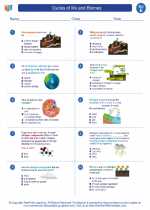 Cycles of life and Biomes
Cycles of life and Biomes  Worksheet/Answer key
Worksheet/Answer key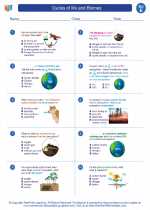 Cycles of life and Biomes
Cycles of life and Biomes  Worksheet/Answer key
Worksheet/Answer key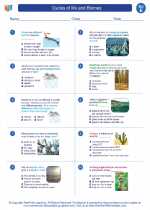 Cycles of life and Biomes
Cycles of life and Biomes  Worksheet/Answer key
Worksheet/Answer key Cycles of life and Biomes
Cycles of life and Biomes  Vocabulary/Answer key
Vocabulary/Answer key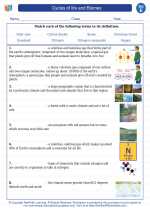 Cycles of life and Biomes
Cycles of life and Biomes  Vocabulary/Answer key
Vocabulary/Answer key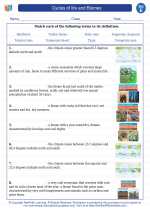 Cycles of life and Biomes
Cycles of life and Biomes 

 Worksheet/Answer key
Worksheet/Answer key
 Worksheet/Answer key
Worksheet/Answer key
 Worksheet/Answer key
Worksheet/Answer key
 Worksheet/Answer key
Worksheet/Answer key
 Vocabulary/Answer key
Vocabulary/Answer key
 Vocabulary/Answer key
Vocabulary/Answer key

The resources above cover the following skills:
LIFE SCIENCE (NGSS)
Ecosystems: Interactions, Energy, and Dynamics
Students who demonstrate understanding can:
Develop a model to describe the movement of matter among plants, animals, decomposers, and the environment.